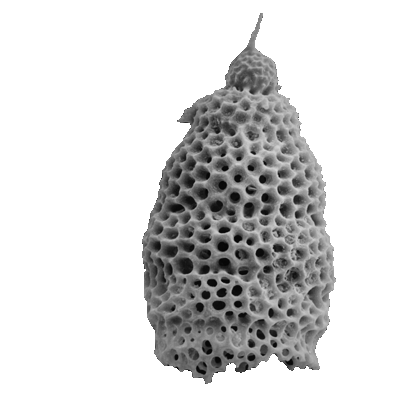| Introduction |
| Radiolaria are holoplanktonic protozoa and form part of the zooplankton, they are non-motile (except when flagella-bearing reproductive swarmers are produced) but contain buoyancy enhancing structures; they may be solitary or colonial. Formally they belong to the Phyllum Protista, Subphylum Sarcodina, Class Actinopoda, Subclass Radiolaria. The sister Subclass Acantharia have skeletons composed of strontium sulphate which is easily dissolved in seawater and are not preserved in the fossil record. Within the Subclass Radiolaria there are two important super-orders. The Tripylea which includes the Phaedaria which have skeletons composed of hollow silica bars joined by organic material, which are not commonly preserved, and the Polycystina which form skeletons of pure opal and are therefore more resistant to dissolution in seawater and hence more commonly preserved in the fossil record. The Polycystina may be divided into two suborders the Spumellaria and the Nassellaria. They are wholly marine, the most relatively commonly preserved and therefore studied members of the formal Subclass Radiolaria. It must be remembered, however, that seawater is under saturated with respect to silica and the degree of preservation of Radiolaria depends on the robustness of the skeleton, depositional and burial conditions and diagenesis. |
 |
| History of Study |
| The name Radiolaria was first used by Meyer in the early 19th Century. Haeckel's book of 1862 is full of fabulous illustrations which are available online thanks to Hamburg University see
http:www.biologie.uni-hamburg.de/b-online/radio/
The Challenger expedition of 1873-76 was a milestone in radiolaria, study not least because of the huge amount of material collected and the susequent large monograph by Haeckel. The 1970's with the advent of the Deep Sea Drilling Program saw another burst of research. During the 1950's W. Riedel showed how Radiolaria evolved rapidly and could therefore be utilised as biostratigraphic tools. |
 |
| Range |
| First recorded occurrences of Radiolaria are from the latest Pre-Cambrian, they are generally thought to have been restricted to shallow water habitats. By the Silurian deep water forms are believed to have evolved. All early Radiolaria are spumellarians, the first possible nassellarians appear in the Carboniferous and definite true nassellarians do not appear until the Triassic. During the late Palaeozoic Radiolaria show a gradual decline until the end of the Jurassic when there is a rapid diversification, this coincides with the diversification of the dinoflagellates which may have represented an increased source of food for the Radiolaria. It is thought that the evolution of diatoms in the Cretaceous may have had a significant effect on radiolarian evolution due to competition for silica (diatoms also use silica to build their skeleton); it is commonly accepted that radiolarian skeletons have become finer and less robust from this time. |
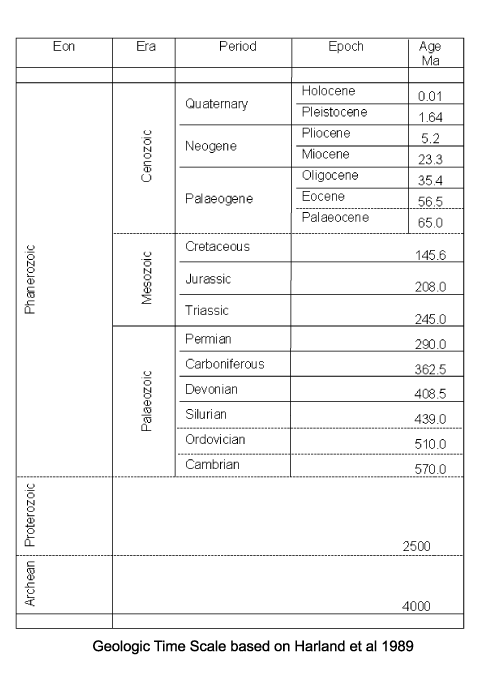 |
 |
| Classification |
| Extant radiolaria are classified using features of both the preservable skeleton and the soft parts, which makes the classificaiton of fossil forms extremely difficult. Most workers in this field today use classification schemes based on Nigrini and Moore's and Nigrini and Lombari's works on modern and Miocene radiolarians. A major problem with radiolarian classification is that separate classifications have been established for the Palaeozoic, Mesozoic and Cenozoic, and little has been done to integrate them. The two suborders, the spumellarians and the nassellarians are subdivided into informal groups which equate to family level. |
 |
| Applications |
| Radiolarian assemblages often contain 200-400 species so they can potentially be very useful biostratigraphic and palaeoenvironmental tools. They have an unusually long geological range, from latest Pre-Cambrian to Recent. Because Radiolaria have a skeleton composed of silica and have an extremely long geological range they have become useful in the study of sediments which lack calcareous fossils, either because of deposition below the CCD (Carbonate Compensation Depth) or because the strata being examined are too old. Cherts and particularly nodules within chert bands are often good sources for Radiolaria. Ophiolites and accretionary terrains often include chert bands and Radiolaria may be the only palaeontological aid available in these situations and as such have proved invaluable in the study of these geological settings. |
 |
| Biology |
| Despite being single-celled protozoans Radiolaria are quite complex, sophisticated organisms. The body is divided into a central capsule which contains the endoplasm and nucleus (or nucleii) and the extracapsulum which contains peripheral cytoplasm composed of a frothy bubble-like envelope of alveoli and a corona of ray-like axopodia and rhizopodia. They feed on other zooplankton, phytoplankton and detritus using their axopodia and rhizopodia in a similar fashion to foraminifera, except that Radiolaria seldom possess pseudopodia and their rhizopodia are not as branching or anastomosing as in foraminifera. Symbiotic algae (including dinoflagellates) often occur in the extracapsulum. The central capsulum is separated from the extracapsulum by the central capsular wall, cytoplasmic strands called fusules link the central capsulum and extracapsulum via pores in this wall. Fusules are unique to Radiolaria and their close relatives the Acantharia. Because Radiolaria are heterotrophic they are not limited to the photic zone and have been found at water depths as great as 4000m. However, because many living Radiolaria contain symbiotic photosynthesising algae they must spend at least daylight hours within the photic zone. Skeletal elements of radiolaria are covered with a layer of cytoplasm which is rapidly withdrawn if the organism is disturbed. It is suggested new skeletal material is formed within this sheath (called the cytokalyamma) and that it acts somehow like a dynamic mould. |
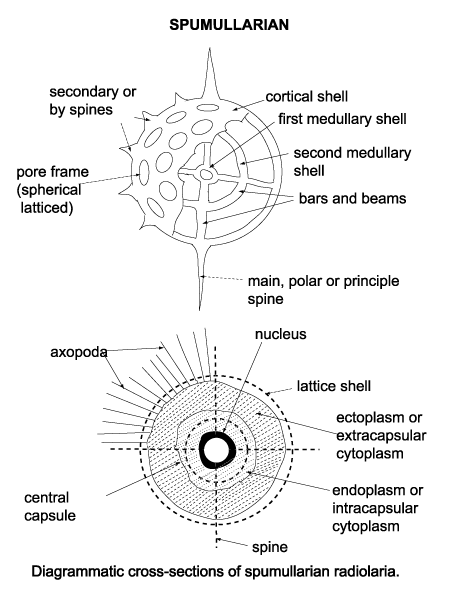 |
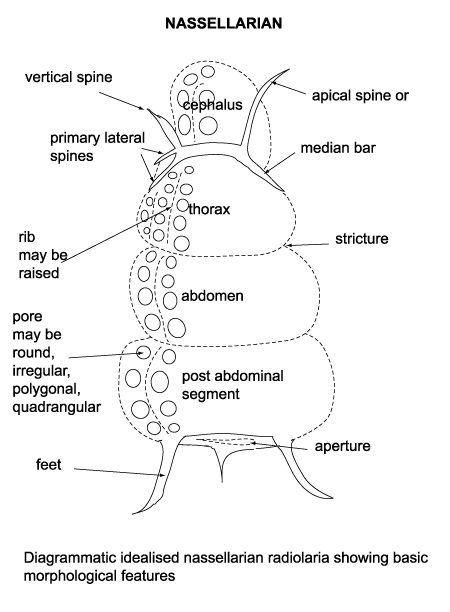 |
 |
| Lifecycle |
| Simple asexual fission of radiolarian cells has been observed. Sexual reproduction has not been confirmed but is assumed to occur; possible gametogenesis has been observed in the form of "swarmers" being expelled from swellings in the cell. Swarmers are formed from the central capsule after the ectoplasm has been discarded. The central capsule sinks through the water column to depths hundreds of meters greater than the normal habitat and swells, eventually rupturing and releasing the flagellated cells. Recombination of these cells, which are assumed to be haploid, to produce diploid "adults" has not been observed however and is only inferred to occur. Comparisons of standing crops within the water column and sediment trap samples have ascertained that the average life span of radiolarians is about two weeks, ranging from a few days to a few weeks. |
 |
| Preparation Techniques |
|
WARNING:
Please remember all preparation techniques require the use of hazardous materials and equipment and should only be carried out in properly equiped laboratories, wearing the correct safety clothing and under the supervision of qualified staff. |
| Radiolaria are often found in standard micropalaeontological preparations (i.e. those aimed at recovering foraminifera). However for the best results samples are washed using a weak (10%) concentration of hydroflouric acid. It is also possible to differentially etch Radiolaria from cherts using hydrofluoric acid. This is extremely dangerous and must only be carried out in a fume cupboard with full protective clothing and as such should be left to trained personel only. |
 |
| Observation Techniques |
| Radiolaria are often smaller than foraminifera but may be veiwed using the same techniques as those described for foraminifera, and they can be picked and mounted in the same way. They can also be prepared in strew mounts on glass slides. |
 |
| Images |
| The following images are of a representative selection of Radiolaria aimed at giving a general overview of the different morphotypes. Each specimen is given a generic and, if possible, a species name followed by its age range, the site location from which the sample was obtained and its size in microns. LM (Light Microscope) SEM (Scanning Electron Microscope). Typical and selected marker species are illustrated from each main period of the geological column in which Radiolaria occur. The images are divided into Cenozoic, Mesozoic and Palaeozoic forms, click on a link below or scroll down to each section. Click on an image to view a larger version. |
|
|
| Cenozoic |
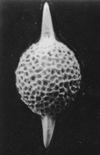
|
| Auxoprunum stauraxonium
Haeckel
|
| ?Recent
|
| Owen Basin, Arabian Sea, N.W. Indian Ocean |
| overall length 280 microns SEM |
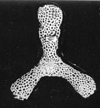
|
| Euchitonia furcata
Ehrenberg
|
| ?Recent
|
| Owen Basin, Arabian Sea, N.W. Indian Ocean |
| overall length 170 microns SEM |
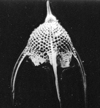
|
| Pterocanium praetaxum
(Ehrenberg)
|
| ?Recent
|
| Owen Basin, Arabian Sea, N.W. Indian Ocean |
| overall length 170 microns SEM |
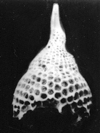
|
| Lamprocyclus maritalus
Haeckel
|
| ?Lower Oligocene-Recent
|
| Owen Basin, Arabian Sea, N.W. Indian Ocean |
| overall length 180 microns SEM |

|
| Dictyocoryne truncatum
(Ehrenberg)
|
| ?Recent
|
| Owen Basin, Arabian Sea, N.W. Indian Ocean |
| overall length 90 microns SEM |

|
| Spongaster tetras tetras
Ehrenberg
|
| Upper Pliocene-Recent
|
| Owen Basin, Arabian Sea, N.W. Indian Ocean |
| overall length 180 microns SEM |
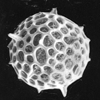
|
| Actinomma
sp.
|
| ?Recent
|
| Owen Basin, Arabian Sea, N.W. Indian Ocean |
| 190 microns SEM |

|
| Actinomma arcadophorum
Haeckel
|
| ?Recent
|
| Owen Basin, Arabian Sea, N.W. Indian Ocean |
| 180 microns SEM |

|
| Cenosphaera cristata
Haeckel
|
| ?Recent
|
| Owen Basin, Arabian Sea, N.W. Indian Ocean |
| 180 microns SEM |

|
| Porodiscus
sp.
|
| ?Recent
|
| Owen Basin, Arabian Sea, N.W. Indian Ocean |
| 170 microns SEM |
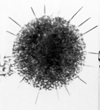
|
| Porodiscus
sp.
|
| ?Recent
|
| Owen Basin, Arabian Sea, N.W. Indian Ocean |
| 170 microns LM |
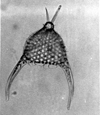
|
| Pterocanium
sp.
|
| ?Recent
|
| Owen Basin, Arabian Sea, N.W. Indian Ocean |
| LM |
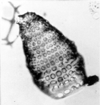
|
| Botrystrobus aquilonarius
(Bailey)
|
| ?Recent
|
| Owen Basin, Arabian Sea, N.W. Indian Ocean |
| LM |
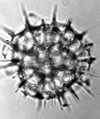
|
| Pylospira octapyle
Haeckel
|
| ?Recent
|
| Owen Basin, Arabian Sea, N.W. Indian Ocean |
| LM |
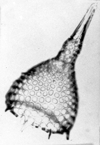
|
| Anthrocyrtidinium oriphense
(Ehrenberg)
|
| ?Recent
|
| Owen Basin, Arabian Sea, N.W. Indian Ocean |
| LM |
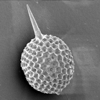
|
| Stylosphaera
sp.
|
|
|
| Rio Claro, Eastern Andalusia, Spain |
| 300 microns excluding spines SEM |
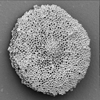
|
| Stylochlamydium asteriscus
Haeckel
|
|
|
| Rio Claro, Eastern Andalusia, Spain |
| SEM |
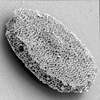
|
| Stylochlamydium asteriscus
Haeckel
|
|
|
| Rio Claro, Eastern Andalusia, Spain |
| SEM |
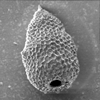
|
| Cyrtocapsella cornuta
Haeckel
|
| Lower-Middle Miocene
|
| Rio Claro, Eastern Andalusia, Spain |
| SEM |
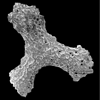
|
| Dictyocoryne
spp. Ehrenberg
|
|
|
| Rio Claro, Eastern Andalusia, Spain |
| SEM |
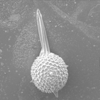
|
| Stylosphaera
sp. Ehrenberg
|
|
|
| Rio Claro, Eastern Andalusia, Spain |
| 150 microns SEM |
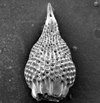
|
| Lamprocyclas maritalis
Haeckel
|
|
|
| Rio Claro, Eastern Andalusia, Spain |
| SEM |

|
| Lamprocyclas maritalis
Haeckel
|
|
|
| Rio Claro, Eastern Andalusia, Spain |
| SEM |
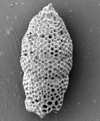
|
| Stichocorys delemontensis
(Campbell and Clark)
|
| Lower Miocene-Upper Miocene
|
| Rio Claro, Eastern Andalusia, Spain |
| SEM |
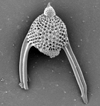
|
| Lychnocanoma elongata
(Vinassa de Regny)
|
| Lower Miocene
|
| Rio Claro, Eastern Andalusia, Spain |
| SEM |
 |
| Mesozoic |
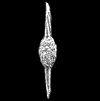
|
| Archaeospongoprunum cortinaensis
(Pessagno)
|
| ?Upper Cretaceous?
|
| Hacho de Montejaque, Penibetic, Southern Spain |
| SEM |
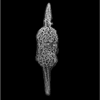
|
| Archaeospongoprunum cf. bipartum
Pessagno
|
| Upper Cretaceous
|
| Hacho de Montejaque, Penibetic, Southern Spain |
| SEM |

|
| Halesium triacanthum
(Squinabol)
|
| Upper Cretaceous
|
| Hacho de Montejaque, Penibetic, Southern Spain |
| SEM |
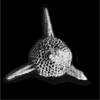
|
| Triactoma hexeris
(O'Dogherty)
|
| ?Upper Cretaceous
|
| Hacho de Montejaque, Penibetic, Southern Spain |
| SEM |
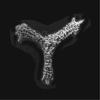
|
| Paronaella grapevinensis
(Pessagno)
|
| ?Upper Cretaceous
|
| Hacho de Montejaque, Penibetic, Southern Spain |
| SEM |

|
| Distylocapsa veneta
(Squinabol)
|
| ?Upper Cretaceous
|
| Hacho de Montejaque, Penibetic, Southern Spain |
| SEM |
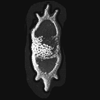
|
| Vitorfus minimus
(Squinabol)
|
| ?Upper Cretaceous
|
| Hacho de Montejaque, Penibetic, Southern Spain |
| SEM |
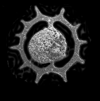
|
| Acanthoicircus tympanum
(O'Dogherty)
|
| ?Upper Cretaceous
|
| Hacho de Montejaque, Penibetic, Southern Spain |
| SEM |
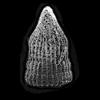
|
| Thanarla venta
(Squinabol)
|
| ?Upper Cretaceous
|
| Hacho de Montejaque, Penibetic, Southern Spain |
| SEM |
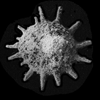
|
| Patellula cognata
(O'Dogherty)
|
| ?Upper Cretaceous
|
| Hacho de Montejaque, Penibetic, Southern Spain |
| SEM |

|
| Alievium superbum
(Squinabol)
|
| ?Upper Cretaceous
|
| Hacho de Montejaque, Penibetic, Southern Spain |
| SEM |

|
| Alievium superbum
(Squinabol)
|
| ?Upper Cretaceous
|
| Hacho de Montejaque, Penibetic, Southern Spain |
| SEM (close up of pore frames) |
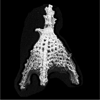
|
| Ultranapora cretacea
(Squinabol)
|
| ?Upper Cretaceous
|
| Hacho de Montejaque, Penibetic, Southern Spain |
| SEM |
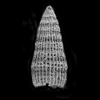
|
| Dictyomitra montisserei
(Squinabol)
|
| ?Upper Cretaceous
|
| Hacho de Montejaque, Penibetic, Southern Spain |
| SEM |

|
| Pseudodictyomitra pseudomarcrocephala
(Squinabol)
|
| ?Upper Cretaceous
|
| Hacho de Montejaque, Penibetic, Southern Spain |
| SEM |
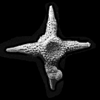
|
| Crucella cachensis
Pessagno
|
| ?Upper Cretaceous
|
| Hacho de Montejaque, Penibetic, Southern Spain |
| SEM |

|
| Sciadiocapsa radiata
(Squinabol)
|
| ?Upper Cretaceous
|
| Hacho de Montejaque, Penibetic, Southern Spain |
| SEM |
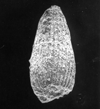
|
| Archaeodictyomitra
sp.
|
| Jurassic-Cretaceous
|
| Theokafta, Epidavros, Greece |
| 140 microns SEM |
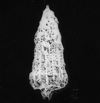
|
| Hsuum maxwelli
Pessagno
|
| ?Jurassic-Cretaceous?
|
| Theokafta, Epidavros, Greece |
| 200 microns SEM |
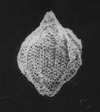
|
| Unuma echinatus
Ichikawa and Yao
|
| Aalanian-Bathonian (Jurassic)
|
| Theokafta, Epidavros, Greece |
| 180 microns SEM |
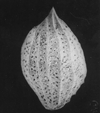
|
| Protunuma fusiformis
Ichikawa and Yao
|
| Bathonian-Tithonian (Jurassic)
|
| Theokafta, Epidavros, Greece |
| 190 microns SEM |
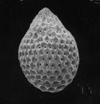
|
| Zamoidellum ovum
Dumitrica
|
| Oxfordian-Tithonian (Jurassic)
|
| Theokafta, Epidavros, Greece |
| 110 microns SEM |
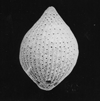
|
| Tricolocapsa plicarum
Yao
|
| Bajocian-Bathonian (Jurassic)
|
| Theokafta, Epidavros, Greece |
| 130 microns SEM |
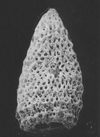
|
| Parvicingula dhimenaensis
Baumgartner
|
| Bajocian-Tithonian (Jurassic)
|
| Theokafta, Epidavros, Greece |
| 255 microns SEM |
 |
|














